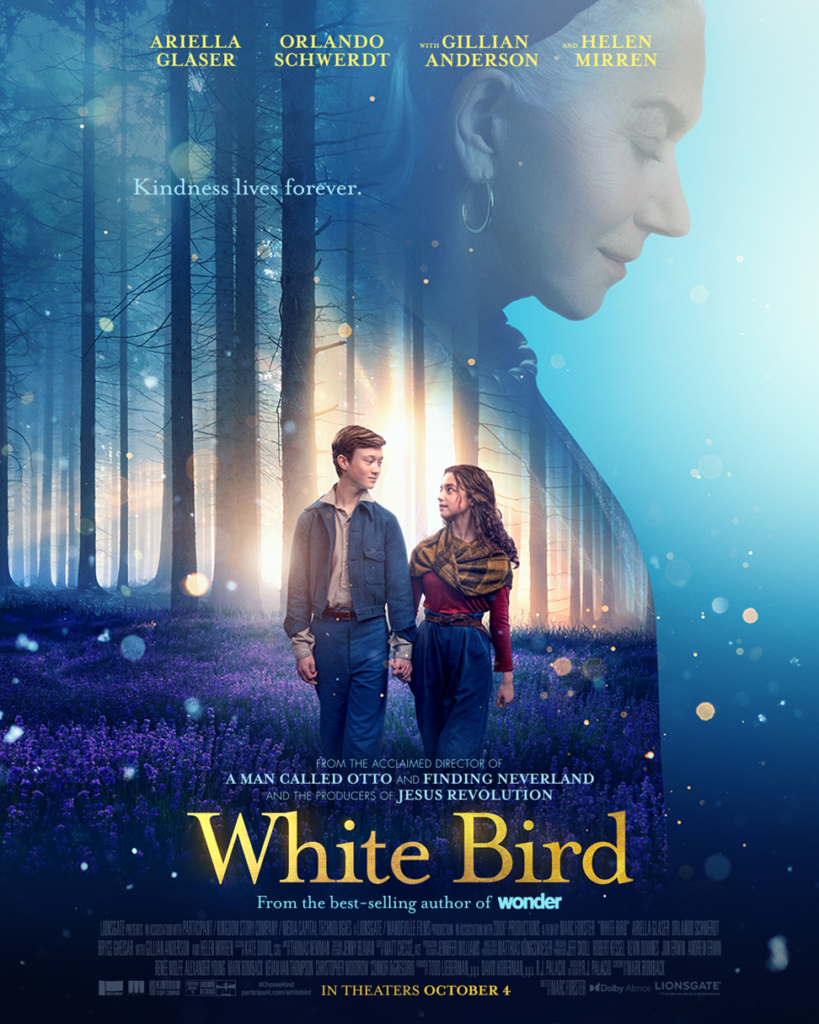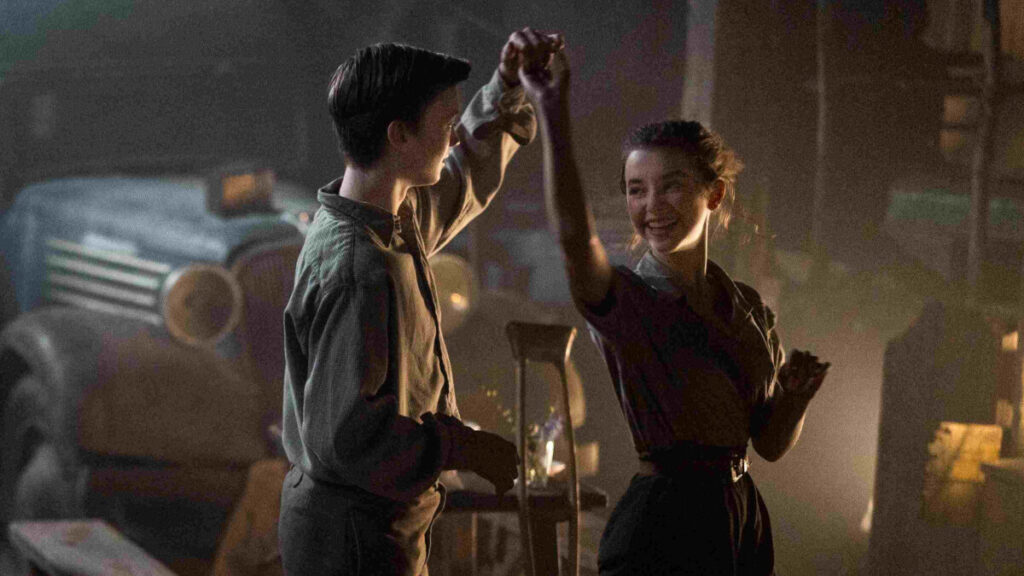November 11, 2024 by Olivia Clemmensen (‘26)
Released on October 4th, 2024, the film White Bird touched the hearts of its viewers. Not particularly well known, the movie is based on the wonderful American Author, R.J. Palacio’s historical fiction graphic novel “White Bird”. The graphic novel was first published on September 3rd, 2019, a thrilling yet beautiful story of a young girl living in Nazi France, and her life during German occupation. The book not only has a powerful and interesting plot, but its graphics and writing are well balanced, so young adults and teens will find enjoyment in it too. The book is a link to the original R.J. Palacio “Wonder” story, where the young girl in White Bird is Julian, the bully in the classic book Wonder’s grandmother. This connection within the story adds a bit of backstory to Julian, and is a part of his own character growth as he learns more about empathy and kindness.

The graphic novel has always been one of my favorite reads and is near and dear to my heart, so before watching the film version this fall, I was really interested to see how the director, Marc Forster would bring to life a story I have loved since it came out in 2019. As all avid readers feel, I was scared that they would not do the book justice, maybe change too much of the plot, cast the wrong actors, or keep the storyline what can be almost too accurate. I was wrong. This movie was one of the most touching films I have seen, with all the right casting. Starring Ariella Glaser as the lead Sara Blum, Orlando Schwerdt as the male lead Julien Beaumier, Bryce Gheisar as the Julian Albans, and Helen Mirren as the old Sara Blum, or “Grand-mère”, the actors and actresses really did a great job at bringing the story to life. Even though the story line is moving in the book, and the reader grows attached to both Sara and Julien, I did not think I would be welling up in the theater as much as I did upon watching the film.
To get into a bit of the plot without spoiling anything, an expelled Beecher Prep student Julian Albans visits his grandmother while starting a new school life after the events of Wonder. His grandmother sees his visit as a good time to share her past with him, hoping to help him understand the power of kindness, and maybe learn from his time at Beecher Prep. The grandmother, Sara Blum, shares her experience attending school in Nazi-occupied France as a 15-year-old Jewish girl in World War II. When the Gestapo interrogate her school and she is forced to hide, Sara runs into Julien Beaumier, a classmate of hers who is often made fun of for his contraction of polio. They both seek refuge in the Beaumier house and soon become friends while she stays in hiding. The movie details her conflicts in homesickness, frustration, love and fear as she spends the war hidden away in the loft of the Beaumier’s barn.
The movie successfully captures the dynamics and emotional plot of the graphic novel, while still adding a touch of new content and feeling, making the story come to life. Its great soundtrack, scenes and set, and well-crafted script effectively contribute to the quality of the movie. Throughout the 2 hours of play time, I was constantly shifting between being on edge of my seat, crying and celebrating- all signs of a great movie. Not only this, but the film highlights a point of view of the second world war that is not often mentioned- those who were in hiding. Many World War II stories whether in the theater or in the pages of a book, have a similar plotline: where Jewish Europeans are deported to concentration camps, and while these stories are important powerful depictions of the Holocaust, it commonly leaves out those who were able to escape but still had a difficult and traumatic experience. White Bird, however, is a story of how not just those of the Jewish community were treated, but those with disabilities, and the stress and uncertainty of going into hiding. It also shows how truly ruinous and terrible the war was, and that we must never go back to something as divisive, discriminatory and violent as World War II.

In the final scene of the movie, the grandmother speaks to a crowd of people at a social art gathering, and shares some of her thoughts on her past. She said, “You see my life was not normal. Hatred is not normal. Cruelty is not normal. LOVE is normal. KINDNESS is normal. But simply knowing this is not enough, it must be shared. It must be practiced. Sometimes the smallest gestures can lead to the greatest change.” Additionally, throughout the film, the French phrase “Vive L’Humanité” (Long Live Humanity) is used, both moments really the underlining root purpose of this film, and this theme of love and kindness is expressed even in the most sad and harsh of scenes.
I highly recommend both reading the book and watching this movie, it has a beautiful message of finding love and kindness in everything, whether at rock bottom or in day-to-day life, a message skillfully intertwined with a heartfelt and heavy plot. A thrilling and immersive story of action, kindness, history, romance and loss, White Bird is an essential movie for everyone to watch.
